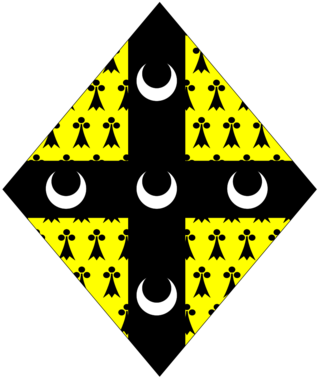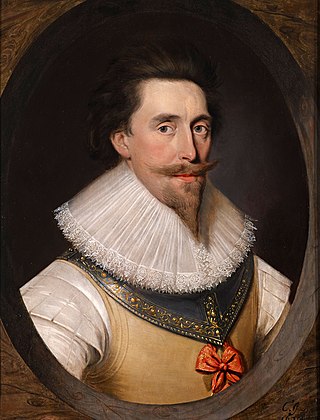Related Research Articles

Kennington is a district in South London, England. It is mainly within the London Borough of Lambeth, running along the boundary with the London Borough of Southwark, a boundary which can be discerned from the early medieval period between the Lambeth and St George's parishes of those boroughs respectively. It is located 1.4 miles (2.3 km) south of Charing Cross in Inner London and is identified as a local centre in the London Plan. It was a royal manor in the parish of St Mary, Lambeth in the county of Surrey and was the administrative centre of the parish from 1853. Proximity to central London was key to the development of the area as a residential suburb and it was incorporated into the metropolitan area of London in 1855.

Sir Edward Poynings KG was an English soldier, administrator and diplomat, and Lord Deputy of Ireland under King Henry VII of England.

Baron Brabourne, of Brabourne in the County of Kent, is a title in the Peerage of the United Kingdom. It was created in 1880 for the Liberal politician Edward Knatchbull-Hugessen, the second son of Sir Edward Knatchbull, 9th Baronet, of Mersham Hatch. He had previously represented Sandwich in the House of Commons and served as Under-Secretary of State for Home Affairs and Under-Secretary of State for the Colonies. Lord Brabourne had assumed by Royal licence the additional surname of Hugessen in 1849. His son, the second Baron, represented Rochester in Parliament as a Liberal.

Baron Howard de Walden is a title in the Peerage of England. It was created by writ of summons in 1597 by Queen Elizabeth I for Admiral Lord Thomas Howard, a younger son of Thomas Howard, 4th Duke of Norfolk, by his second wife, the Honourable Margaret Audley, daughter of Thomas Audley, 1st Baron Audley of Walden.

Viscount Clifden, of Gowran in the County of Kilkenny, Ireland, was a title in the Peerage of Ireland. It was created on 12 January 1781 for James Agar, 1st Baron Clifden. He had already been created Baron Clifden, of Gowran in the County of Kilkenny, in 1776, also in the Peerage of Ireland. The Viscounts also held the titles of Baron Mendip in the Peerage of Great Britain from 1802 to 1974 and Baron Dover from 1836 to 1899, when this title became extinct, and Baron Robartes from 1899 to 1974, when this title became extinct, the two latter titles which were in the Peerage of the United Kingdom. The interrelated histories of the peerages follow below.

Sir William Scott of Scot's Hall in Smeeth, Kent was Lord Warden of the Cinque Ports.

Sir John Scott, JP of Scot's Hall in Smeeth was a Kent landowner, and committed supporter of the House of York. Among other offices, he served as Comptroller of the Household to Edward IV, and lieutenant to the Lord Warden of the Cinque Ports.

Sir John Baker (1488–1558) was an English politician. He served as Chancellor of the Exchequer from 1545 to his death, having previously been Speaker of the House of Commons of England.

Francis Fane, 1st Earl of Westmorland, of Mereworth in Kent and of Apethorpe in Northamptonshire was an English landowner and politician who sat in the House of Commons between 1601 and 1624 and then was raised to the Peerage as Earl of Westmorland.

Charles Rose Ellis, 1st Baron Seaford was a British politician, sugar planter, and slave holder.
Wynne Ellis (1790–1875) was a wealthy British haberdasher, politician and art collector.

Thomas Smythe or Smith of London, Ashford and Westenhanger, Kent was the collector of customs duties in London during the Tudor period, and a member of parliament for five English constituencies. His son and namesake, Sir Thomas Smythe, was the first governor of the East India Company, treasurer of the Virginia Company, and an active supporter of the Virginia colony.

Vere Fane, 4th Earl of Westmorland, styled The Honourable Vere Fane from 1644 to 1661 and Sir Vere Fane from 1661 to 1691, was a British peer and Member of Parliament for Peterborough and twice for Kent.

Sir Richard Guildford KG was an English courtier, administrator, politician and military leader who held important positions under King Henry VII.

St Mark's Church, Kennington, is an Anglican church on Kennington Park Road in Kennington, London, United Kingdom, near Oval tube station. The church is a Commissioners' church, receiving a grant from the Church Building Commission towards its cost. Authorised by the Church Building Act 1824, it was built on the site of the old gallows corner on Kennington Common.
William Nutbeam, of Ash-next-Sandwich, Kent, was an English politician.
William Ellis, of Burton in Kennington and Canterbury, Kent.

Sir Adrian Poynings was a military commander and administrator. The youngest of the illegitimate children of Sir Edward Poynings, he played a prominent role in the defence of the English garrison at Le Havre in 1562–63.
Lieutenant-Colonel Hon. Augustus Frederick Ellis was a British Army officer and Tory politician.
Sir Edward Williams, 5th Baronet was a Welsh landowner.
References
- 1 2 "ELLIS, Thomas, of Kennington, Kent". History of Parliament Online. Retrieved 18 June 2013.
This article relies largely or entirely on a single source .(May 2014) |